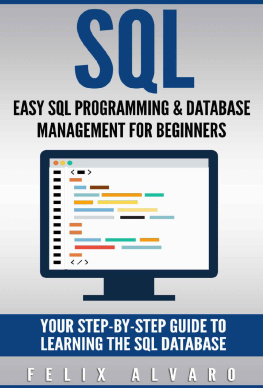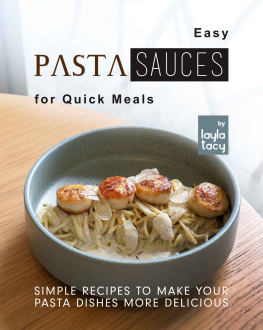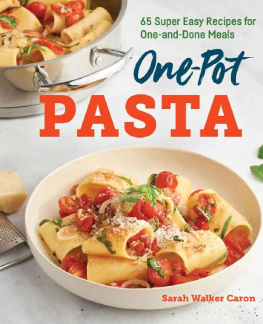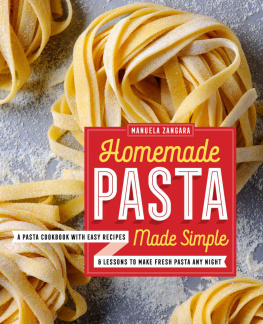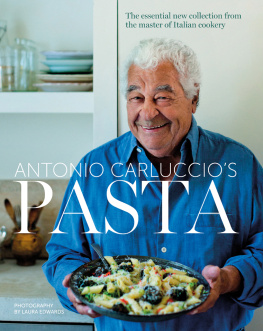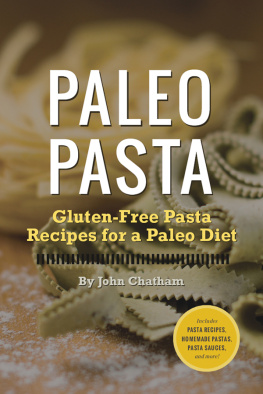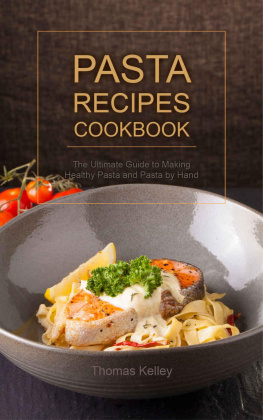Copyright 2020 by Rockridge Press, Emeryville, California
No part of this publication may be reproduced, stored in a retrieval system, or transmitted in any form or by any means, electronic, mechanical, photocopying, recording, scanning, or otherwise, except as permitted under Sections 107 or 108 of the 1976 United States Copyright Act, without the prior written permission of the Publisher. Requests to the Publisher for permission should be addressed to the Permissions Department, Rockridge Press, 6005 Shellmound Street, Suite 175, Emeryville, CA 94608.
Limit of Liability/Disclaimer of Warranty: The Publisher and the author make no representations or warranties with respect to the accuracy or completeness of the contents of this work and specifically disclaim all warranties, including without limitation warranties of fitness for a particular purpose. No warranty may be created or extended by sales or promotional materials. The advice and strategies contained herein may not be suitable for every situation. This work is sold with the understanding that the Publisher is not engaged in rendering medical, legal, or other professional advice or services. If professional assistance is required, the services of a competent professional person should be sought. Neither the Publisher nor the author shall be liable for damages arising herefrom. The fact that an individual, organization, or website is referred to in this work as a citation and/or potential source of further information does not mean that the author or the Publisher endorses the information the individual, organization, or website may provide or recommendations they/it may make. Further, readers should be aware that websites listed in this work may have changed or disappeared between when this work was written and when it is read.
For general information on our other products and services or to obtain technical support, please contact our Customer Care Department within the United States at (866) 744-2665, or outside the United States at (510) 253-0500.
Rockridge Press publishes its books in a variety of electronic and print formats. Some content that appears in print may not be available in electronic books, and vice versa.
TRADEMARKS: Rockridge Press and the Rockridge Press logo are trademarks or registered trademarks of Callisto Media Inc. and/or its affiliates, in the United States and other countries, and may not be used without written permission. All other trademarks are the property of their respective owners. Rockridge Press is not associated with any product or vendor mentioned in this book.
Interior and Cover Designer: Jami Spittler
Art Producer: Meg Baggott
Editor: Lauren Ladoceour Production Editor: Ruth Sakata Corley
Photography 2020 Hlne Dujardin
Food styling by Anna Hampton
courtesy of Sara Davis
ISBN: Print 978-1-64739-744-9
eBook 978-1-64739-446-2
R0
To my parents,
Giuseppe and Giuseppa Alvaro,
who left everything they knew
to give us everything they could.
contents
As the youngest child of Italian immigrants from Calabria, I grew up watching my mother, Giuseppa, cook homemade meals with ingredients from my father Giuseppes backyard garden. After more than a decade of living away from my parents, I worried I was slowly losing my connection to my heritage. So in 2010, I traveled to Italy to take a pasta-making class as a break from the monotony of my corporate job and to learn more about pasta and Italian food. I spent a week in Bologna in the home of the wonderful Tori family of Bluone in Italy Food & Wine Tours, learning how to make and roll pasta the traditional wayby hand. By the end of the week, I was so proud of my perfectly rolled sfogliaa thin, oval-shaped pasta sheet made with a mattarello, the traditional Italian pasta rolling pin.
When I arrived back home, I thought it would be fun to practice what I had learned and bring my handmade pasta to sell at the local farmers market. Little did I know, I would turn that sold-out Saturday market trip into a business: Melinas Fresh Pasta in Durham, North Carolina.
One of my favorite parts of the business is to teach classes and share my love of homemade pasta with others. Even more rewarding is when I hear back from students about how they were able to make a pasta dinner for their family and friends. I especially enjoy delving into the regional cooking of Italy and teaching people about authentic Italian food from around the boot.
This book is for people who love creating food inspired by the traditions of Italy. It is my hope that these recipes and techniques will help you become an Italian nonnalevel master pasta-maker. In the first part, we will review the craft of pasta-making, including an overview of the ingredients and tools needed to get started. In the second part, we begin with an entire chapter devoted to step-by-step instructions for mastering different types of pasta dough. From there, we will cover a wide variety of pasta-making techniques, recipes, and tips based on traditional, regional recipes from Italy.
Once your flour-dusted hands close up this book, youll feel confident enough to make pasta on a regular basis and treat family and friends to never-ending bowls and delicious sauces around a table filled with love and happinessjust like the table I grew up at.

Knowing the background and the why when learning something new helps you understand a craft better. In the first chapter, well start by learning about the science and history of pasta, as well as the basics of making it at home. Youll find an overview of the ingredients needed to make pasta, with a special focus on the different flours used for a variety of doughs. Then pack your bags, because well take a tour of Italy with a specific focus on some of the different regions and their distinct pasta traditions. Finally, we will discuss how to properly cook, sauce, and store homemade pasta, and give you some tips on the tools and equipment that will take your pasta-making to the next level. In the second chapter, well get into the details of how to make pasta dough, and take you through the steps of kneading, mixing, rolling, and troubleshooting homemade dough.

Pasta-making is a mix of tradition and science. Italian nonnas may not delve too deeply into the science, but they know the touch and feel of the dough. Their deep understanding of how different ingredients and techniques affect pastas bite or texture comes from years of practice; yours will begin here. While pasta can be made with nothing other than your hands, a rolling pin, and a knife, we will review some of the essential tools you can use to make different shapes and to simplify the process.
Why Make Pasta at Home?
Once you have tasted homemade pasta, you may end up with a lot of extra room in your pantry where boxes of store-bought noodles used to live. Whether you decide to eat the pasta fresh or let it dry, youll notice a silky, rich texture with a slight bite thats hard to resist. Making pasta at home also means you can control the ingredients to ensure they are of the highest quality. Fresh pasta doesnt require many ingredients (just flour and eggs at its simplest), complicated techniques, or expensive tools. A few ingredients and simple techniques can create so many variations. This is home cooking at its very bestthe meditative process of kneading pasta dough and the care that goes into shaping it, the creativity with the filling for stuffed pastas, and, finally, matching the pasta with a homemade sauce. As little Italian nipote (grandchildren) know, sharing the tradition of making pasta for and with family and friends solidifies your connection to a heritage that can seem more and more distant these days. In so many cultures, deep family connections are forged through foodI am excited to share my Italian version of that with you.


